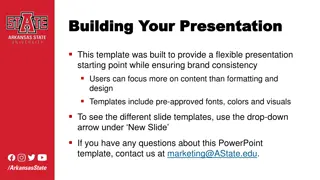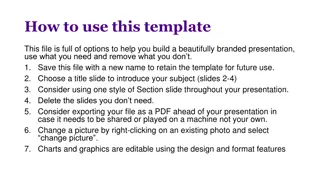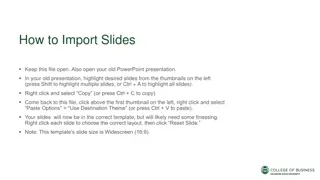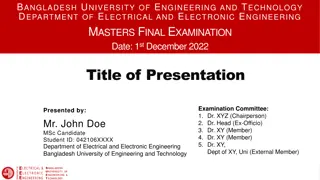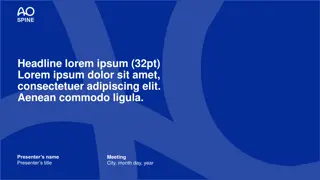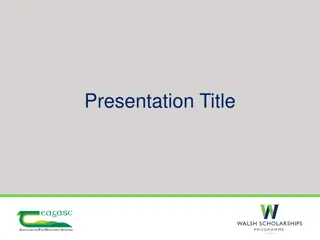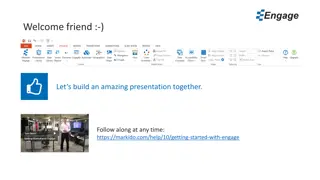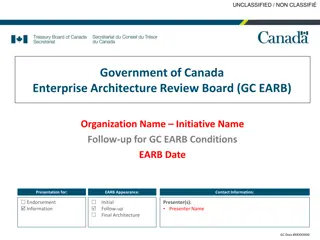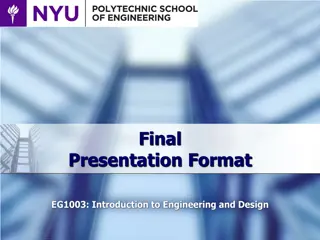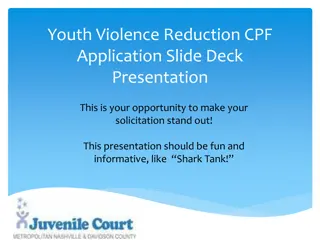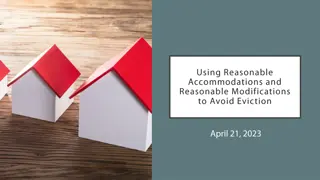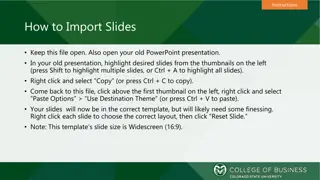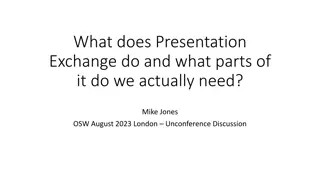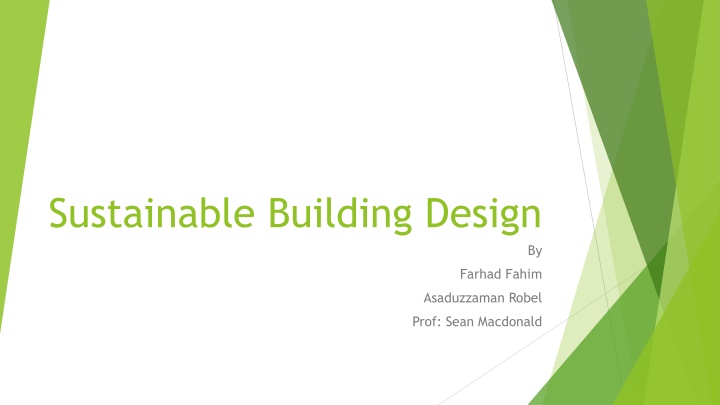
Sustainable Building Design: LEED Certification and Green Energy Features
"Learn about sustainable building design, LEED certification, and the key features of environmentally friendly construction. Explore how energy efficiency, solar panels, geothermal heating, and other sustainable practices are shaping modern architecture."
Download Presentation

Please find below an Image/Link to download the presentation.
The content on the website is provided AS IS for your information and personal use only. It may not be sold, licensed, or shared on other websites without obtaining consent from the author. If you encounter any issues during the download, it is possible that the publisher has removed the file from their server.
You are allowed to download the files provided on this website for personal or commercial use, subject to the condition that they are used lawfully. All files are the property of their respective owners.
The content on the website is provided AS IS for your information and personal use only. It may not be sold, licensed, or shared on other websites without obtaining consent from the author.
E N D
Presentation Transcript
Sustainable Building Design By Farhad Fahim Asaduzzaman Robel Prof: Sean Macdonald
What is sustainable building design? The design and construction of buildings that are based on low-energy use. Sustainable building designs place a strong emphasis on energy-efficiency in the design of the structure, to reduce the need for heating and cooling systems. Typical considerations are the possibility of using solar panels or wind power. They will also look for energy savings in the physical layout, using natural light where possible to minimize the need for electric lighting and building orientation for optimal solar heating or cooling. Other considerations include water usage.
LEED Certification LEED, or Leadership in Energy and Environmental Design, is changing the way we think about how buildings and communities are planned, constructed, maintained and operated. Leaders around the world have made LEED the most widely used third-party verification for green buildings, with around 1.85 million square feet being certified daily. LEED works for all buildings from homes to corporate headquarters at all phases of development. Projects pursuing LEED certification earn points across several areas that address sustainability issues. Based on the number of points achieved, a project then receives one of four LEED rating levels: Certified, Silver, Gold and Platinum. LEED-certified buildings are resource efficient. They use less water and energy and reduce greenhouse gas emissions. As an added bonus, they save money
How does the LEED certification work? LEED breaks the certification process into eight components and offers points in each category (by using specific practices or certain materials) to measure overall performance. Builders are free to choose how to acquire points. Participating houses are awarded points based on materials, construction methods and energy efficiency. A LEED rating of Certified, Silver, Gold or Platinum is based on the number of points; a house accumulates in the 136 point system. Point total for each grade is for an average size house: Certified 45 points Silver 60 points Gold 75 points Platinum 90 points The point threshold is lowered for smaller houses and raised for larger houses. The rating system is designed to guarantee minimum levels of sustainable practices through 18 mandatory measures in eight credit categories.
BLDG 92 Construction year: 2011 Size: 8000 sq. ft No. floors : 4 Certification: LEED Platinum for its Green Energy Features Geothermal Heating system, Solar Panels, Green Roof, Reuse of Material in construction, rainwater/gray water capture system,LED lighting, 90% of existing structure was reused, radiant heat in the floor, new extension built modularly Energy Efficiency Features LED Lighting, Solar Panels, Geothermal Heating and Cooling, Rain Water/Gray Water Capture and Re-use, Radiant Heat, Green Roof Green Products Rain Water/Gray Water Capture and Re-use Project Cost: $16.5 million
Sustainability at Brooklyn Navy Yard Building 92: Matthew Berman, one of the principals of design firm workshop/apd mentioned: It was huge; you could drive through it, ends and used it as our rainwater storage tank. All the water is retained through a harvesting system and filtered for later use. There are also solar hot water installations on the upper roof and low maintenance trays on the lower green roof to catch the water and channel into the container.
The faade is a solar screen with a lasercut pattern of the USS Brooklyn in dry dock. The Navy Yard s outer gate, along Flushing Avenue, is water cut and was conceptualized by Ferra Designs, a tenant in the Navy Yard. Berman and his crew tried to source the majority of the materials from within the Navy Yard from lighting to pre fabricated concrete and steel units by a company called Capsys. It was literally that close. Other highlights include low VOC materials on the interiors, high efficiency lighting, and bathroom countertops by Ice Stone, a recycled glass manufacturer in the Navy Yard. he says. We capped it at both Berman
What Federal Government is doing to promote sustainable building design? New York City is planning to overhaul the energy efficiency standards of all its public buildings and to pressure private landlords to make similar improvements. The initiative is to decrease greenhouse gas emissions by 80 percent by 2050 from 2005 levels. New York would become the largest city in the world to make the commitment, according to the city s leaders. Such ambitions, though, will come at a significant near - term price: At least $1 billion of its capital funding alone will be devoted to enhancing the city owned buildings over the next decade, the administration said, excluding the cost of the private building alterations and other changes. Though the city s many competing financial interests mean there are typically few spending guarantees, particularly on projects intended to span decades, officials insist the money will be incorporated in its 10year capital plan, to be released early next year. Global warming was much more of an abstraction to New York City until two years ago, Mr. de Blasio said in an interview on Friday, alluding to Hurricane Sandy, which in 2012 caused 44 deaths and resulted in $19 billion of damage to the city. There s a moral imperative to act. In total, the city said, building based greenhouse gas emissions are expected to fall an additional 10 percent by 2025, the equivalent of removing more than 700,000 vehicles from the road. By 2025, according to the city s estimates, the upgrades will yield more than $1.4 billion per year in savings. (Flegenheimer, Matt. 20th sept 2014. De Blasio orders a greener city, setting goals for energy efficiency in buildings. New York Times.)
Spray Foam Insulation Spray Foam Insulation is basically polyurethane that is composed of isocyanate and polyol resin. Also known as SPF [Spray Polyurethane Foam] is the most efficient method of insulation for both residential and commercial buildings.
Benefits of Spray Foam Insulation Prevents air and moisture infiltration. High R value. [3.7/inch] According to a study conducted by US Environmental Protection Agency, by using spray foam insulation one could save up to 50% on monthly energy bills. Eco friendly solution. Blocks up to 80% of outside noise. Fire resistant. Water resistant. It absorbs less than 5% water. Meets LEED s point requirements. Increases the resale value of building.
Radiant Heating Radiant heating system is different from typical HVAC systems because they heat surfaces rather than air. The warm surfaces then radiate heat to occupants. The surfaces also conduct heat to people that touch them, and warm the air by convection as well.
Benefits of Radiant Heating System Since there are no duct losses this system is more efficient than forced air heating. According to the Radiant Panel Association it is 30% more efficient than forced air heating. Since air temperature is relatively constant throughout the room it increases home comfort. It is silent. Saves space in the room. By installing in driveway, sidewalk and yard one save labor and concrete during snow.

